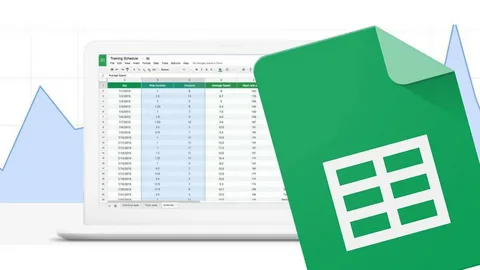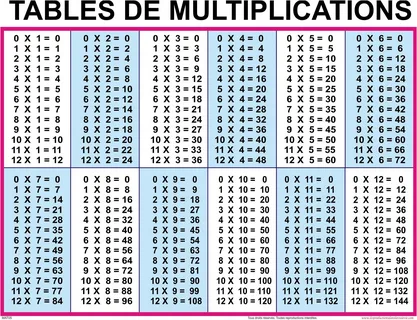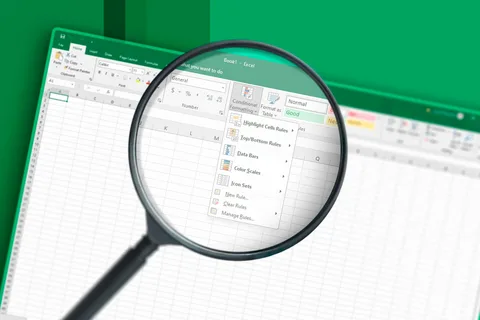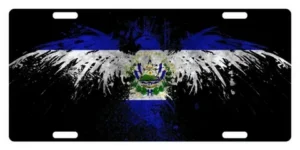Everything You Need to Know About Spreadsheet Rectangles NYT
Table of Contents
Introduction
If you’ve ever used a spreadsheet, you’ve probably encountered spreadsheet rectangles NYT without even realizing it. These rectangles, formed by rows and columns of cells, are the building blocks of every spreadsheet. They help you organize and manage data in a way that’s clear and easy to navigate. The concept of spreadsheet rectangles NYT becomes especially important when working with large amounts of information, as they allow you to sort, filter, and analyze data more efficiently.
In the world of puzzles, particularly crossword puzzles from the New York Times, the term spreadsheet rectangles NYT takes on a slightly different meaning. Here, the grid-like structure of crossword puzzles is often compared to a spreadsheet, where the rectangles serve as spaces to fill in answers based on the clues provided. Understanding how these rectangular grids work is essential for solving the puzzle, as they help you visualize where each answer fits and how the clues connect to each other.
Whether you’re organizing data in a spreadsheet or solving a challenging crossword puzzle, spreadsheet rectangles NYT are the key to making sense of complex information. These simple rectangular sections not only help in storing data but also play a crucial role in puzzle-solving by guiding you through the grid. In this post, we’ll explore the importance of these rectangles, how they work, and how you can use them both in spreadsheets and puzzles to make your tasks easier and more enjoyable.

What Are Spreadsheet Rectangles NYT and How Do They Work?
When you hear the term spreadsheet rectangles NYT, it might sound complicated at first, but it’s quite simple once you understand it. In the context of spreadsheets, a rectangle refers to a section of the grid that is made up of rows and columns of cells. Each cell in this grid can hold a piece of information, such as a number, word, or formula. These rectangles are the building blocks of spreadsheets, helping to organize and present data in a clear and structured way.
In a typical spreadsheet, you’ll find that the cells are arranged in a rectangular shape. The vertical columns are labeled with letters (A, B, C, etc.), and the horizontal rows are labeled with numbers (1, 2, 3, etc.). The intersection of a row and column forms a cell, and the combination of these cells creates rectangles. These rectangles, whether small or large, help you group related data together, making it easier to read and analyze.
When we talk about spreadsheet rectangles NYT in crossword puzzles, we’re looking at a similar idea, but in a different context. Crossword puzzles, like the ones in the New York Times, are often designed with grids that look a lot like spreadsheets. Each box or rectangle in the grid represents a place where a word or letter fits. These rectangular sections organize the puzzle and help you work through the clues. Just like with spreadsheets, these grids are key to making sense of the information, whether it’s a number or a word.
Spreadsheet rectangles NYT are essential tools for managing data. In spreadsheets, they allow you to input, calculate, and organize information efficiently. For example, if you’re working on a budget, you can use these rectangles to enter the amount of money you’ve spent in different categories. This structure helps you keep track of everything clearly, making it easier to update and adjust the data as needed. The power of these rectangles lies in their ability to break down large sets of data into smaller, more manageable sections.
Similarly, in crossword puzzles, spreadsheet rectangles NYT help you organize your answers. As you solve the puzzle, each word or letter you fill into the grid occupies one of these rectangles. Understanding how the rectangles fit together in the puzzle grid is crucial for solving it. When you fill out the grid, it’s like organizing a complex set of data, and each rectangle helps you see where the next piece goes. By following the structure of the rectangles, puzzle solvers can piece together the clues and reach the final solution.
How Spreadsheet Rectangles NYT Can Help You Organize Your Data
One of the main reasons spreadsheet rectangles NYT are so useful is their ability to help organize large amounts of information. When you’re working with spreadsheets, these rectangles allow you to group similar data together in rows and columns. For example, you could organize your monthly expenses by listing each category of spending in separate rows, and then use columns for the dates or amounts. This structure makes it much easier to keep track of everything, and you can quickly find what you’re looking for by scanning through the rectangular sections.
By using spreadsheet rectangles NYT effectively, you can also ensure that your data is clear and easy to understand. Each rectangle serves as a defined space for a specific piece of information. If you’re tracking a project’s progress, you can dedicate a rectangle to the status, deadline, and assigned person for each task. This helps break down complex data into small, manageable chunks, making it simpler to review and analyze. The organization provided by these rectangles ensures that nothing gets lost in a sea of information.
In addition to organizing your data, spreadsheet rectangles NYT can also help with calculations and analysis. Many spreadsheets allow you to use formulas within these rectangular sections to automatically perform calculations. For example, you can add up numbers across multiple rectangles, calculate averages, or apply conditional formatting. This not only saves you time but also reduces the chances of making errors in your calculations. With the right setup, these rectangles can turn your data into powerful insights.
Another great thing about spreadsheet rectangles NYT is that they make sorting and filtering your data much easier. By using the built-in sorting and filtering tools, you can instantly reorganize your data based on specific criteria. For example, if you’re keeping track of a list of contacts, you can sort them by name, city, or even age, all within the same rectangular grid. This flexibility makes spreadsheets highly efficient for managing a variety of data, whether you’re working on a personal budget, a work project, or something else entirely.
Lastly, spreadsheet rectangles NYT help you visualize your data in a way that is both logical and functional. Whether you’re tracking a sales report or planning an event, having data organized in rectangles allows you to see trends and patterns easily. The neat, grid-like structure lets you compare different pieces of information at a glance. This is especially useful when working with large datasets, as it helps you identify key insights and make better-informed decisions.

Understanding the Role of Spreadsheet Rectangles NYT in Crossword Puzzles
In crossword puzzles, spreadsheet rectangles NYT play a crucial role in organizing the puzzle grid. Just like how a spreadsheet uses rectangles to group data, a crossword puzzle uses rectangular spaces to guide you through solving clues. Each rectangle in the crossword puzzle represents a specific word or letter, and filling in these spaces is the key to completing the puzzle. The structure of the grid helps you visualize how the clues connect to each other and where the answers fit within the puzzle.
These rectangles are not just random spaces—they serve a purpose. In a typical crossword, there are both “Across” and “Down” clues, and each of these answers fills a specific set of rectangles in the grid. Understanding how these rectangles work is important because it allows solvers to identify where answers should be placed. By filling out one rectangular section at a time, you can gradually complete the entire puzzle, connecting the answers across and down.
In many ways, spreadsheet rectangles NYT in crossword puzzles function like puzzle pieces. When solving, you might start with a few answers you know for sure, filling in the corresponding rectangles in the grid. Then, as you fill out more and more rectangles, other parts of the puzzle start to make sense. The connection between these rectangular sections is what makes the puzzle solvable. Just like working with data in a spreadsheet, it’s about connecting the right pieces in the right order.
Another important role that spreadsheet rectangles NYT serve in crossword puzzles is helping with clue placement. Each clue has a specific number of letters, which directly relates to the number of rectangles in the grid for that clue. By counting the rectangles, you can figure out how long the answer is, which is essential for solving the puzzle. This structure is similar to how rectangles in a spreadsheet help you determine the amount of data you need to work with or how to group information based on the number of cells.
Lastly, spreadsheet rectangles NYT can help you keep track of your progress in the puzzle. As you fill in more answers, you see the rectangular sections of the grid getting completed. This visual representation of progress is motivating and helps you stay focused as you work through the clues. The clearer and more organized your grid becomes, the easier it is to tackle the remaining answers, ultimately leading to the satisfaction of solving the entire puzzle.
The Benefits of Using Spreadsheet Rectangles NYT for Better Organization
Using spreadsheet rectangles NYT can greatly enhance your ability to organize information, whether you’re managing data or solving a crossword puzzle. One of the primary benefits of these rectangles is that they provide a clear and structured way to break down complex information into smaller, manageable sections. In a spreadsheet, this means organizing numbers, words, or tasks into rows and columns, where each rectangle serves a specific purpose. This simple yet effective structure helps prevent data from becoming overwhelming and allows you to easily locate and update specific pieces of information.
Similarly, in crossword puzzles, spreadsheet rectangles NYT help to organize clues and answers in a way that’s easy to follow. Each rectangular space in the grid represents a word or a letter, and the clues are designed to fit perfectly into these sections. This organization makes it easier for solvers to approach the puzzle systematically. Instead of guessing or randomly filling in words, you can focus on filling in one rectangular section at a time, which makes the entire puzzle feel more manageable.
In both spreadsheets and puzzles, spreadsheet rectangles NYT encourage logical thinking and problem-solving. When you work with data, you often need to consider how different pieces of information relate to each other. By organizing the data into rectangles, it’s much easier to see patterns and relationships, which helps you make better decisions. In crossword puzzles, the same logical thinking applies. The clues guide you through the grid, and as you fill in the rectangles, you start to see how the answers connect, helping you solve the puzzle piece by piece.
Another key benefit of spreadsheet rectangles NYT is their flexibility. You can adjust the size of these rectangles depending on the amount of information you need to fit. In spreadsheets, this means you can expand or shrink columns and rows to suit your needs. This adaptability allows you to work with different types of data, whether it’s numbers, text, or even images. In crossword puzzles, the flexibility of the rectangular grid allows for various difficulty levels, as the arrangement of clues and their corresponding rectangles can be changed to suit different puzzle types and skill levels.
Finally, spreadsheet rectangles NYT help improve productivity by providing a clear visual structure. In spreadsheets, you can quickly find what you need, perform calculations, and track progress without getting lost in the data. Similarly, in crossword puzzles, the organized grid keeps you on track and focused. As you fill in more rectangles, you can visually see your progress, which encourages you to keep going. This visual structure makes both spreadsheet work and puzzle-solving more efficient and enjoyable, giving you a sense of accomplishment as you work through each section.

Spreadsheet Rectangles NYT: A Key to Mastering Data in Spreadsheets
Spreadsheet rectangles NYT are essential tools for mastering the art of working with data. Whether you’re organizing numbers, tracking budgets, or managing lists, these rectangular spaces in a spreadsheet provide a simple yet powerful structure to work with. By dividing data into rows and columns, you can clearly separate and group different types of information. Each rectangle acts like a container for specific data, helping you maintain order and clarity, especially when dealing with large datasets. This method of organization allows for easy navigation and quick updates as you manage your information.
One of the main reasons spreadsheet rectangles NYT are so valuable is their role in keeping data consistent and easy to manipulate. For instance, if you’re using a spreadsheet to track expenses, you can use the rectangles to list each item and its associated cost. By keeping the data organized in rows and columns, you can easily calculate totals, averages, and trends. With the power of formulas and functions, you can automate many tasks, such as adding up all the expenses in a column or applying conditional formatting to highlight specific data. This takes much of the hard work out of managing data and makes the process more efficient.
In addition to their organizational benefits, spreadsheet rectangles NYT also help you analyze data more effectively. With data neatly arranged in rows and columns, you can sort and filter information to identify patterns, outliers, or trends. For example, if you’re analyzing sales data, you can filter the rectangles by date, product, or sales amount to see how your business is performing in different areas. This kind of analysis would be much harder if your data were unorganized or scattered, but with spreadsheet rectangles, you can easily manipulate and analyze the information to gain valuable insights.
Moreover, spreadsheet rectangles NYT help you visualize your data in a way that is both clear and intuitive. Spreadsheets often include features that allow you to create charts and graphs from the data in these rectangles. By turning rows and columns of data into visual representations, you can make complex information easier to understand. Whether it’s a bar graph showing monthly sales or a pie chart breaking down expenses, visual tools help you communicate your data more effectively and make better decisions based on your findings.
Finally, the ability to manage and organize data with spreadsheet rectangles NYT is an essential skill for anyone working with spreadsheets. Whether you are a student, business professional, or casual user, understanding how to use these rectangles will allow you to handle your data more efficiently. By grouping information in logical ways, performing calculations, and using filters and visualizations, you can master data management and use spreadsheets to their full potential.
How to Easily Navigate Spreadsheet Rectangles NYT in Puzzles
Navigating spreadsheet rectangles NYT in puzzles, like crossword grids, may seem tricky at first, but with a few simple strategies, you can master the process. Just like how a spreadsheet helps you organize data into neat rows and columns, crossword puzzles use a grid of rectangles to organize the clues and answers. To start, it’s important to focus on understanding the layout of the grid. Each rectangle in a crossword corresponds to a specific word, either across or down. Knowing where the across and down clues are placed helps you begin solving the puzzle with ease.
The first step in navigating the spreadsheet rectangles NYT in puzzles is to carefully look at the numbered spaces in the grid. Each clue corresponds to a number that marks the starting point of a word in one of the rectangular spaces. These numbers tell you where to begin filling in the rectangles. By following the numbers across and down, you can organize your solving process and avoid filling in the wrong spaces. This clear layout helps you focus on one set of clues at a time and makes it easier to get started.
As you solve a crossword puzzle, you’ll start filling in spreadsheet rectangles NYT with letters. The key to navigating the grid efficiently is to work in sections. It’s often helpful to start with the easier clues that you can fill in quickly. Once you complete a few rectangles, the intersecting words from across and down will give you more letters to work with, helping you solve more difficult clues. The more rectangles you fill, the clearer the puzzle becomes, and you’ll start to see the connections between clues and answers.
Another trick to easily navigate spreadsheet rectangles NYT in puzzles is to use the pattern of blank and filled rectangles. Many crossword puzzles have a structure where certain rectangles are left blank, and these empty spaces help you visualize which clues connect. If you’re stuck on a specific clue, looking at the surrounding filled rectangles can give you hints about what letters might go in the empty ones. By paying attention to the placement of these filled and empty rectangles, you can often figure out the answers faster.
Lastly, spreadsheet rectangles NYT in puzzles provide a visual guide for tracking your progress. As you fill in the rectangles, you can see the puzzle slowly come together. This is motivating and helps you stay on track. If you find yourself getting stuck, remember that you can always revisit completed rectangles and use the letters you’ve already filled in to make educated guesses about the remaining clues. By approaching the puzzle in a methodical way, using the grid of rectangles as your roadmap, you’ll soon develop a strategy for solving puzzles with confidence.

Spreadsheet Rectangles NYT: How to Use Them to Solve Crossword Clues
Spreadsheet rectangles NYT are not just for organizing data; they play an important role in solving crossword puzzles. Each rectangular space in a crossword puzzle corresponds to a letter in an answer, and by using this structure, you can break down the puzzle into smaller, more manageable sections. To start solving, focus on the numbered rectangles in the grid. Each number marks the beginning of a word, either across or down, and your goal is to fill these rectangles with the correct letters. Understanding how these rectangles work is key to approaching crossword clues with confidence.
When solving crossword clues using spreadsheet rectangles NYT, it’s helpful to start with the easier clues first. These are typically the ones you know right away or that have straightforward answers. By filling in these rectangles, you will quickly add letters to the grid that can help you solve more difficult clues. As you fill in one rectangular space, the intersecting letters from across and down clues can give you hints about other answers. This process of filling in one rectangle at a time helps you build momentum and gradually fill the entire grid.
Another effective way to use spreadsheet rectangles NYT in solving crossword clues is by focusing on the patterns of letters. For example, if you’ve filled in a few rectangles and you know the length of the word, you can begin to think about possible word combinations that fit into the remaining rectangles. Crossword puzzles often follow common patterns or wordplay, and recognizing these patterns can help you solve the clues more efficiently. By observing how the letters in the rectangles fit together, you can often make educated guesses about the remaining answers.
A great strategy when using spreadsheet rectangles NYT is to look for clues with multiple answers in a row or column. When you fill in several rectangles in a row, you can use the letters in the completed sections to help you tackle tougher clues. The more you fill in, the more options you’ll have to consider for the remaining words. Additionally, the more answers you complete, the easier it becomes to spot hidden word patterns, helping you crack difficult clues with confidence.
Finally, spreadsheet rectangles NYT help you stay organized and track your progress. As you fill in the rectangles, you get a visual representation of your work. This structure allows you to see exactly where you’re making progress and where you still need to work. With every new letter you add to the grid, you are closer to solving the puzzle. By using the rectangles as a guide and staying focused on one section at a time, you’ll find yourself solving crossword puzzles more efficiently and enjoying the challenge even more.
The Evolution of Spreadsheet Rectangles NYT in Puzzle Design
The use of spreadsheet rectangles NYT in puzzle design has come a long way, evolving from simple grids to more complex and intricate structures. In the early days of crossword puzzles, grids were often quite straightforward, with squares neatly arranged in rows and columns. These basic spreadsheet rectangles NYT allowed solvers to focus mainly on the clues and answers. However, over time, puzzle designers began to experiment with the layout, introducing more challenging and engaging ways to arrange the rectangles. This evolution helped shape modern crossword puzzles into the intricate and engaging puzzles we know today.
In the beginning, spreadsheet rectangles NYT were just a tool for organizing crossword answers, but as puzzles became more popular, designers started to think about how these rectangles could be used for more than just data. They began to consider the aesthetics of the grid and how different arrangements could make the solving experience more enjoyable. As a result, crossword grids started to feature diagonal entries, longer answers, and more varied patterns. This use of rectangles to create new forms within the puzzle not only made the puzzles more challenging but also added a layer of creativity that made them more enjoyable to solve.
Another significant shift in the evolution of spreadsheet rectangles NYT in puzzles came with the introduction of themed crosswords. Puzzle creators began using the rectangular grid structure to support themes, where clues and answers were linked by a central idea. The rectangles in these puzzles would often be arranged to enhance the theme, with special entries or patterns built into the grid. These design changes made crosswords more exciting and challenging, as solvers had to think not only about the clues but also about how the theme affected the arrangement of the rectangular spaces.
With the rise of digital puzzles, the role of spreadsheet rectangles NYT in puzzle design has expanded even further. Digital crossword puzzles often allow solvers to interact with the grid in new ways, such as highlighting certain rectangles or providing hints when needed. This technology has made it easier to design puzzles with more complex layouts, including irregular grids and puzzles with no black squares at all. These changes have transformed crossword puzzles into an even more interactive and enjoyable experience, with spreadsheet rectangles NYT at the heart of their design.
Today, the evolution of spreadsheet rectangles NYT in puzzle design has led to a wide variety of crossword styles and formats. From simple grids to themed puzzles to fully interactive digital experiences, the way rectangles are used in puzzles continues to innovate. As puzzle solvers, we can appreciate how these changes have enhanced the challenge and enjoyment of solving, and we can only imagine how the design of crossword grids will continue to evolve in the future.

How Spreadsheet Rectangles NYT Make Data Visualization Easier
Spreadsheet rectangles NYT play a significant role in making data visualization easier and more organized. Just like in crossword puzzles, where rectangles are used to structure answers, these rectangular grids can also be applied to organize and display information in a clear, visual format. In the world of data, using rectangular cells allows users to view information in a structured way, making it easier to identify patterns, trends, and relationships within the data. The simple grid layout of spreadsheet rectangles NYT helps transform complex data into something visually digestible, allowing anyone to make sense of the numbers at a glance.
One of the key benefits of using spreadsheet rectangles NYT for data visualization is that they break down large sets of information into manageable pieces. Each rectangular cell can hold a specific piece of data, and by grouping related data together, users can see how different variables are connected. For example, in a financial report, each rectangle could represent a data point such as revenue or expenses, and these could be arranged in columns to show trends over time. This organization makes it easier for anyone, from beginners to experts, to spot important insights without feeling overwhelmed by the raw numbers.
Furthermore, spreadsheet rectangles NYT allow for customization, which enhances their usefulness in data visualization. With the flexibility of spreadsheets, users can adjust the size and color of the rectangles to highlight important data points. For example, certain cells can be shaded to show which numbers are higher or lower than average, while others can be highlighted to indicate trends or changes. This visual differentiation helps users quickly interpret the data without having to read through extensive lists or rows of figures, making it a powerful tool for anyone looking to understand their data more clearly.
The use of spreadsheet rectangles NYT also makes comparing data sets easier. In traditional spreadsheets, data can be organized into rows and columns, but with the help of rectangles, you can visually align similar pieces of data side by side. This side-by-side comparison makes it easy to identify relationships between different sets of data. For example, you could place sales figures in one column and customer feedback in another, allowing you to see how customer satisfaction relates to sales performance. The visual organization of spreadsheet rectangles NYT makes this comparison simple and intuitive.
Lastly, as digital tools evolve, spreadsheet rectangles NYT continue to improve the way we visualize and interact with data. Advanced spreadsheet software offers features like dynamic charts and graphs, which are built on the same grid structure as spreadsheet rectangles NYT. This allows for the creation of interactive data visualizations, where users can click on a rectangle to see more detailed information or filter data based on certain criteria. This level of interaction makes it even easier to explore data and draw meaningful conclusions from it, further emphasizing the value of using spreadsheet rectangles NYT for effective data visualization.
Tips for Creating Your Own Spreadsheet Rectangles NYT
Creating your own spreadsheet rectangles NYT can be a fun and useful way to organize data or solve puzzles. Whether you’re working on a crossword or trying to visualize data in a new way, understanding how to set up these rectangles can help make your work easier and more efficient. The first tip is to start simple. Begin with a basic grid of rectangles that is easy to manage. For example, if you’re designing a crossword puzzle, start with a small grid of 5×5 rectangles. This will allow you to get familiar with the structure and how to adjust the grid before making it more complex.
Next, when designing spreadsheet rectangles NYT, it’s important to keep your purpose in mind. If you’re creating a puzzle, think about the theme or layout you want to use. For a crossword, this could mean creating symmetrical rectangles that align well with the clues. If you’re using the rectangles for data visualization, decide what type of data you will be displaying and how the rectangles will help highlight patterns or relationships. Whether it’s numbers, text, or a combination of both, making sure the rectangles serve your specific purpose will ensure that your design is effective.
Another important tip is to use colors and formatting to make your spreadsheet rectangles NYT more visually appealing and easy to read. Color-coding certain areas of your grid can help you quickly identify important sections, such as completed answers in a puzzle or key data points in a visualization. For example, you could use one color for the answers you’ve already solved and a different color for clues you’re still working on. In data visualization, using contrasting colors for higher and lower values can make trends easier to spot at a glance.
In addition to color, consider using labels and borders to organize your spreadsheet rectangles NYT further. Adding clear labels or numbering to your rectangles can make your grid more intuitive and user-friendly. This is especially helpful in crossword puzzles, where each number corresponds to a specific word. In data grids, labeling columns and rows clearly ensures that anyone viewing your work can easily understand the information. Borders around specific rectangles can also help visually separate sections, making the data or puzzle easier to navigate.
Finally, don’t be afraid to experiment and adjust your spreadsheet rectangles NYT as needed. Whether you’re designing a puzzle or organizing data, flexibility is key. You may find that a certain arrangement of rectangles works better for one task than another, so feel free to make changes as you go. With practice, you’ll become more comfortable with creating your own grid and customizing it to suit your needs. The more you experiment, the better you’ll understand how to optimize your rectangles for clarity and efficiency.
Why Spreadsheet Rectangles NYT Are So Important for Puzzle Solvers
Spreadsheet rectangles NYT are essential tools for puzzle solvers, especially when it comes to solving complex crossword puzzles. These rectangles form the backbone of the puzzle grid, creating a structured and organized framework that allows solvers to focus on the clues and answers. Without this clear layout, it would be difficult for solvers to find the correct word placements. The rectangular grid helps keep everything in its place, making it easier to follow along and solve each clue methodically. For crossword enthusiasts, these rectangles are key to keeping track of both across and down answers, ensuring no mistakes are made.
Another reason spreadsheet rectangles NYT are so important is that they allow solvers to visualize the puzzle more effectively. The rows and columns formed by these rectangles provide a clear view of where answers should fit, and they help solvers mentally map out potential answers. As solvers fill in words, they can see how the grid starts to take shape, which provides a sense of progress and achievement. This organized structure helps reduce confusion, making it easier to focus on solving the next clue without worrying about where to place answers.
The symmetry created by spreadsheet rectangles NYT is also significant for puzzle solvers. Many crossword puzzles rely on symmetry, where answers are evenly distributed across the grid. The rectangles within the grid often reflect this symmetry, with similar patterns forming across the rows and columns. This symmetrical arrangement not only makes the puzzle aesthetically pleasing but also helps solvers notice connections between clues more easily. For example, seeing that two words share a letter might help a solver deduce the correct answers more quickly.
In addition, spreadsheet rectangles NYT can be used to highlight certain parts of the puzzle, making it easier for solvers to focus on specific sections. For example, a solver might choose to fill in all of the across answers first, then tackle the down answers. The grid allows for such flexibility, as each rectangle in the puzzle can be tackled one by one. By breaking the puzzle into smaller sections using the grid, solvers can avoid feeling overwhelmed and stay on track. This approach helps puzzle solvers maintain focus and finish the puzzle efficiently.
Finally, spreadsheet rectangles NYT also offer a level of organization that is critical when puzzles become more complicated. In more challenging puzzles, solvers often encounter overlapping clues or tricky words that require a careful approach. The clear rectangular structure of the grid allows solvers to manage these overlaps and ensures they don’t make careless mistakes. By following the order and structure of the grid, solvers can more easily track which answers have been placed and where gaps still remain, making the overall process more manageable and enjoyable.

Exploring the Connection Between Spreadsheet Rectangles NYT and Puzzle Grids
The connection between spreadsheet rectangles NYT and puzzle grids is a fascinating one, especially when you consider how both systems rely on structured organization. Just like spreadsheet cells, puzzle grids use rectangular sections to divide the space and give solvers a way to focus on specific parts of the puzzle. These rectangles in puzzle grids are like mini-spreadsheets, each holding a piece of information—whether it’s a word, a clue, or a number. The structure of these grids helps organize the puzzle into manageable sections, making it easier to solve step by step.
In crossword puzzles, spreadsheet rectangles NYT serve a similar function as spreadsheet cells—they hold the answers. Each rectangle in the grid can be filled with a word or letter that corresponds to a specific clue. The arrangement of these rectangles within the grid is carefully designed to ensure that words fit together in both horizontal and vertical directions. This connection mirrors the way spreadsheets are used to organize data, where each cell holds specific information, making both systems intuitive for users. Puzzle solvers can use the grid structure to track their progress and manage multiple answers at once, much like organizing data in a spreadsheet.
Another important connection between spreadsheet rectangles NYT and puzzle grids is the flexibility and adaptability of the layout. Just as a spreadsheet allows users to resize, move, and format individual cells, puzzle grids are flexible in the way answers can be entered and adjusted. For example, solvers might start with a few answers filled in and adjust their strategy as they uncover more clues. The rectangular layout makes it easy to add or remove answers as new information is revealed, which is crucial for solving complex puzzles. This adaptability ensures that the puzzle-solving experience remains dynamic and allows solvers to make the most of their problem-solving skills.
Moreover, spreadsheet rectangles NYT in puzzle grids often offer a level of symmetry that makes them even more useful. Much like how a spreadsheet grid uses rows and columns to create a balanced structure, crossword grids are also designed with symmetry in mind. In many puzzles, the layout follows a balanced pattern where the placement of clues is symmetrical, making it easier for solvers to spot relationships between words. The design of the grid helps solvers focus on specific areas without feeling overwhelmed by the entire puzzle, just as spreadsheets help users focus on specific data sets by organizing information into neat rows and columns.
Lastly, the connection between spreadsheet rectangles NYT and puzzle grids also highlights how organization plays a key role in both activities. Whether you’re organizing data in a spreadsheet or solving a puzzle, the grid structure ensures that information is easy to read and navigate. The rectangular cells in both systems serve as a guide, keeping everything in place and preventing confusion. This methodical approach to organizing information allows both puzzle solvers and data analysts to approach their tasks with confidence, knowing that each part of the grid serves a specific purpose in the larger picture.
Conclusion
In conclusion, spreadsheet rectangles NYT are an important tool for puzzle solvers and data organizers alike. They help break down complex puzzles into smaller, manageable sections, making it easier to see patterns and find answers. Whether you’re solving a crossword puzzle or working with a spreadsheet, these rectangles help keep everything neat and organized. By understanding how they work, you can approach puzzles with more confidence and stay organized while solving them.
So, the next time you’re working on a puzzle or organizing data, remember how useful spreadsheet rectangles NYT can be. They not only make puzzles easier to solve but also help keep your information well-arranged. Whether you’re a beginner or an expert, using these rectangles will make your puzzle-solving journey a lot smoother and more enjoyable. Keep practicing, and you’ll soon become a master at using these helpful grids!














Post Comment